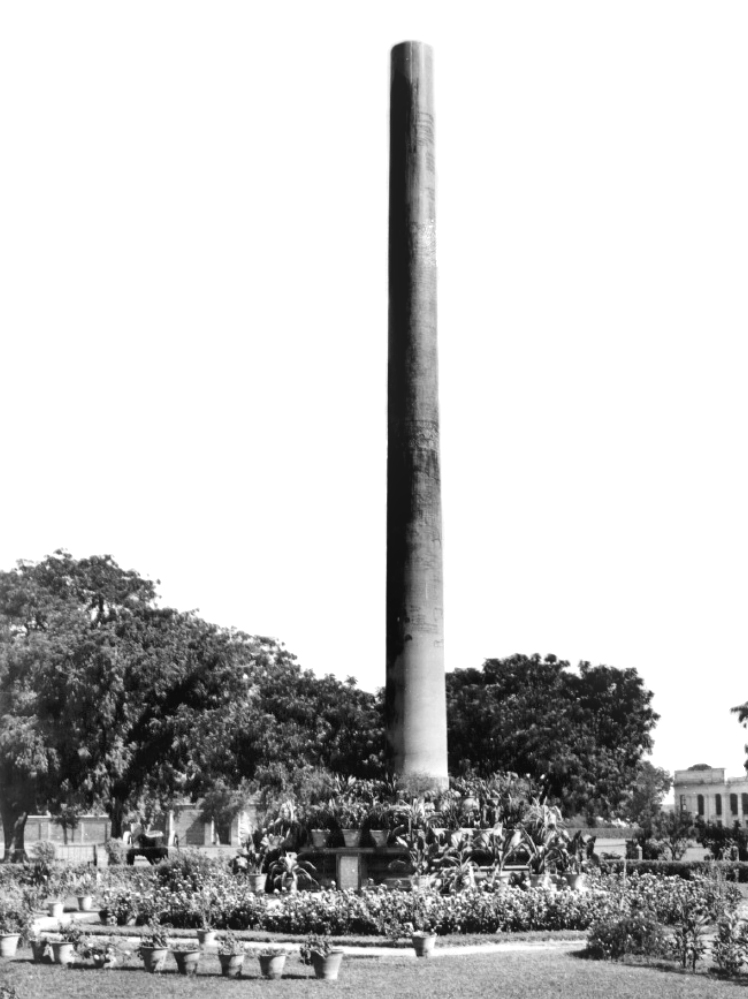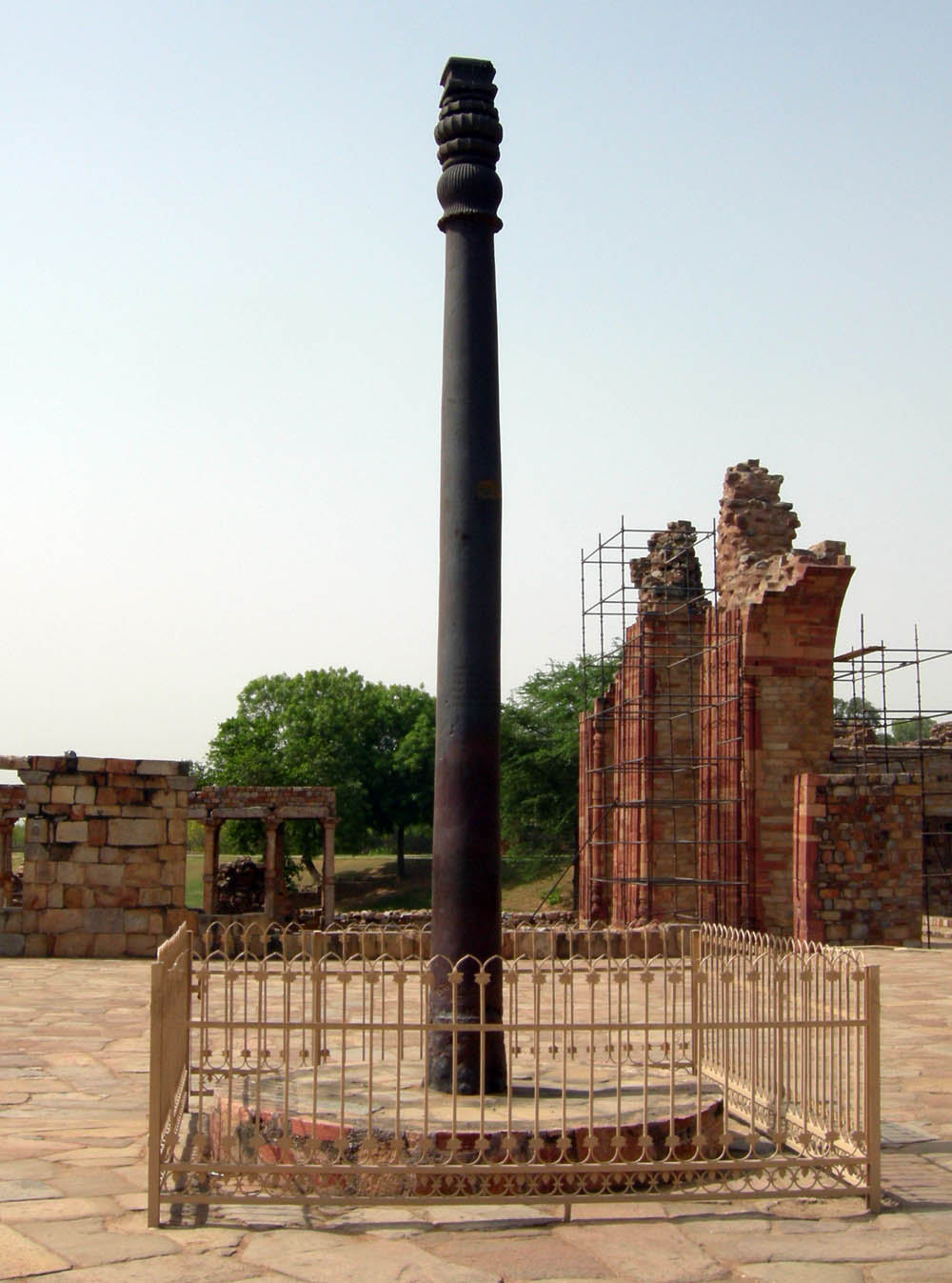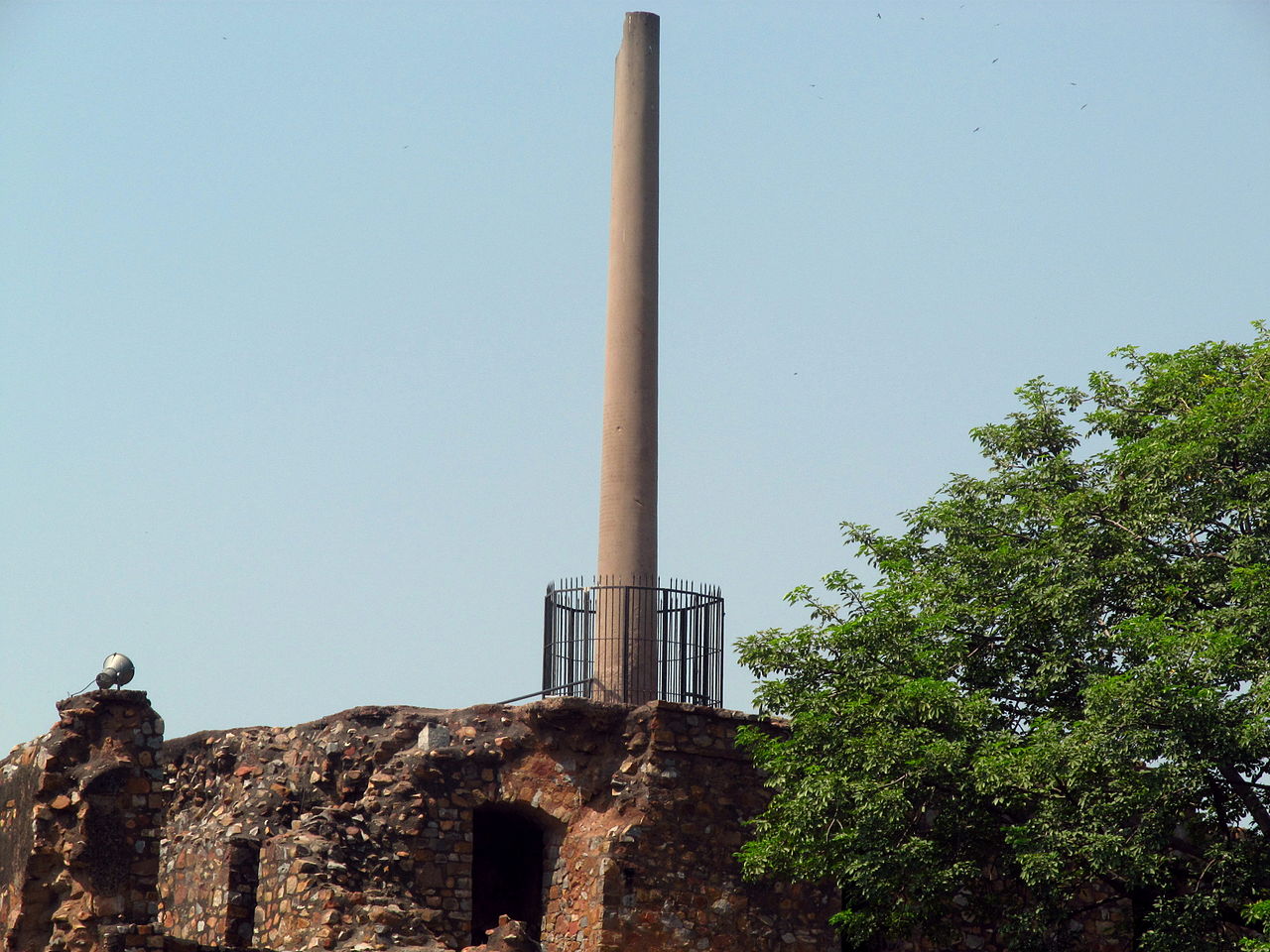The earliest example of pillar architecture comes from the Harappan civilization. Two kinds of pillars having found at the Harappan settlement. One is a stone pillar having measurement that was found at Dholavira (Gujarat). This pillar is probably used to check the water level in the reservoir.
Harappan Pillar Architecture

Pillars made up of bricks were used by Harappan in their houses. These pillars are square/rectangular in shape. These are simple. Their only purpose was to support the roof. The Mesopotamian people used round pillars in their houses. Three types of pillars were made during the Mauryan period.
Mauryan’s Pillars
The 1st variety was that of a wooden pillar. These pillars were used in the palace build by Chandra Gupta Maurya. These pillars are known only from literacy reference. The other 2 varieties of pillars were made up of stone. Out of these 1st variety was used in the stone palace build by Ashoka to support the roof & 2nd variety represented Independent work. A large number of pillars were erected by Ashoka throughout his empire. 19 such pillars have been discovered so far. The prominent discoveries are Sarnath (Near Varanasi), Vaishali (Bihar), Sanchi (Madhya Pradesh), Lumbini/Rumindei pillar (Nepal Tarai), Rampurva (Two pillars – Champaran, Bihar), Lauriya – Araraj (Champaran, Bihar), Lauriya – Nandnangarh, Sankisa (Farukabad, Uttar Pradesh), Ranighat (Khyber Pakhtunkhwa), Kandhar (Afghanistan).
Ashoka’s Pillar
Delhi – Topra pillar: This Pillar was brought to Delhi from Topra a place near Ambala by Sultan Firoz Shah Tughlaq). It was installed at the top of a Mosque in Firoz Shah Kotla build by Sultan Firoz Shah Tughlaq.
Delhi – Meerut pillars (This pillar was originally located at Meerut. It was brought to Delhi by Sultan Firoz Shah Tughlaq. It was installed in his hunting palace located at Vazriabad hills).

Allahabad pillar (the pillar was originally located at Kosambi. It was carried to Allahabad by Akbar who build for theirs. This pillar contains the inscription of Ashoka, Samudra Gupta, Jahangir & many local rulers. Ashokan pillars are monumental. The height of the pillars about 12-15 m. These pillars are in four parts that are monolithic shaft – a bell shape part, abacus, capital. These pillars were installed at prominent places of religious, economic, political significance.
Royal order (edict) was inscribed on the shaft of these pillars. The idea was the monumental character of the pillar will attract people & visitors will read the inscriptions. In this way, the Royal message would propagate among people effortlessly. Ashokan pillars were cut at Mathura, Chunar (Mirzapur, Uttar Pradesh). These were two prominent places in the stone cutting industry.
At Mathura, white-spotted red sandstone used & at Chunar blue-grey stone was used. From these two places, pillars were transported all over the Indian subcontinent. The weight of the shaft of these pillars is more than 50 tons. This indicates the means of communication were highly developed during the Mauryan Age.
Persian Pillars
A large number of pillars were used in Persia in the 6th century BC in the palaces builds by King Darius. These pillars are similar to the Ashokan pillars because of this number of scholars such as V.A. Smith and Stella, Kramiraishch has opined that Mauryan pillars / Ashokan pillars represented an act of build adaptation. It was emphasized that the Mauryan art was an example of alien grafting. The closer examination of forms & features of Mauryan & Persian pillars brings to light striking dissimilarities between the two.
Difference between Ashokan & Persian Pillars
The shaft of the Ashokan pillar is monolithic, whereas the shaft of the Persian pillar is made of stone pieces joined together. The shaft of Ashokan pillars tapers from bottom to top. This reflects the influence of wooden architecture. The shaft of the Persian pillar is cylindrical.
The outer surface in the Ashokan pillar is smooth whereas the shaft of Persian pillars have grooves. Ashokan pillar was dug on Earth without any base Persian pillar that was erected on a bell-shaped base. There 2 bell shapes in Persian pillars whereas the Ashokan pillar has only one bell shape. The purpose of the pillars was different in both cases.
Ashokan pillars were used for inscribing edict whereas Persian pillars were used to support the roof. Persian pillars have human capital whereas Ashoka has animal capital. The animal portage in this capital has religious-cultural significance in India. These capitals can’t be considered as an act of foreign imitation. Earlier it’s believed that the polish found on the Ashokan pillar was learned from Persia but recent researches have brought light that the same polish was used on Northern black polished ware. The earliest date of this pottery is 800 BC.
Vasudev Saran Agarwal has found the method of making this glossy policy in Apastamba Sutra – a book of 6th century BC. These pieces of evidence confirm that the knowledge of making glossary polish in India was much older than in Persia.
Post Mauryan Age Pillars
One pillar of this age has been discovered at Vidisa (Madhya Pradesh). This pillar was erected by Heliodorus. He was a Greek ambassador in the court of Shunga king Kashiputra Bhaghadra. This pillar was made up of red sandstone. It is quite similar to the Ashokan pillars. This pillar contains an inscription in which Heliodorus proclaimed himself as the follower of Bhagvatism (Bhagavati Bhakt).
Pillar during Gupta Age

Only one pillar of this age has been discovered. It is the Mehrauli pillar (Delhi). It is made of iron. This pillar was originally located near Udaigiri cave (Madhya Pradesh). It was brought to Delhi by Sultan Iltutmish during the early years of 13th He erected this pillar near Qutub-Minar.
This pillar is about 7.21 m high & weight is about 6 tons. The shaft of pillars is in a single piece. Even today very few foundries can manufacture such a big single piece shaft. The metal (iron) of this pillar has not got rust even after more than 1000 years remain open because of this its metallurgy is amazing even for modern scientists. This pillar carries an inscription of King Chandra who has been identified with Chandra Gupta II Vikramaditya. These inscriptions describe military conquest & another achievement of the King. Pillar was manufactured in the reign of this Chandra in about 400 AD.

